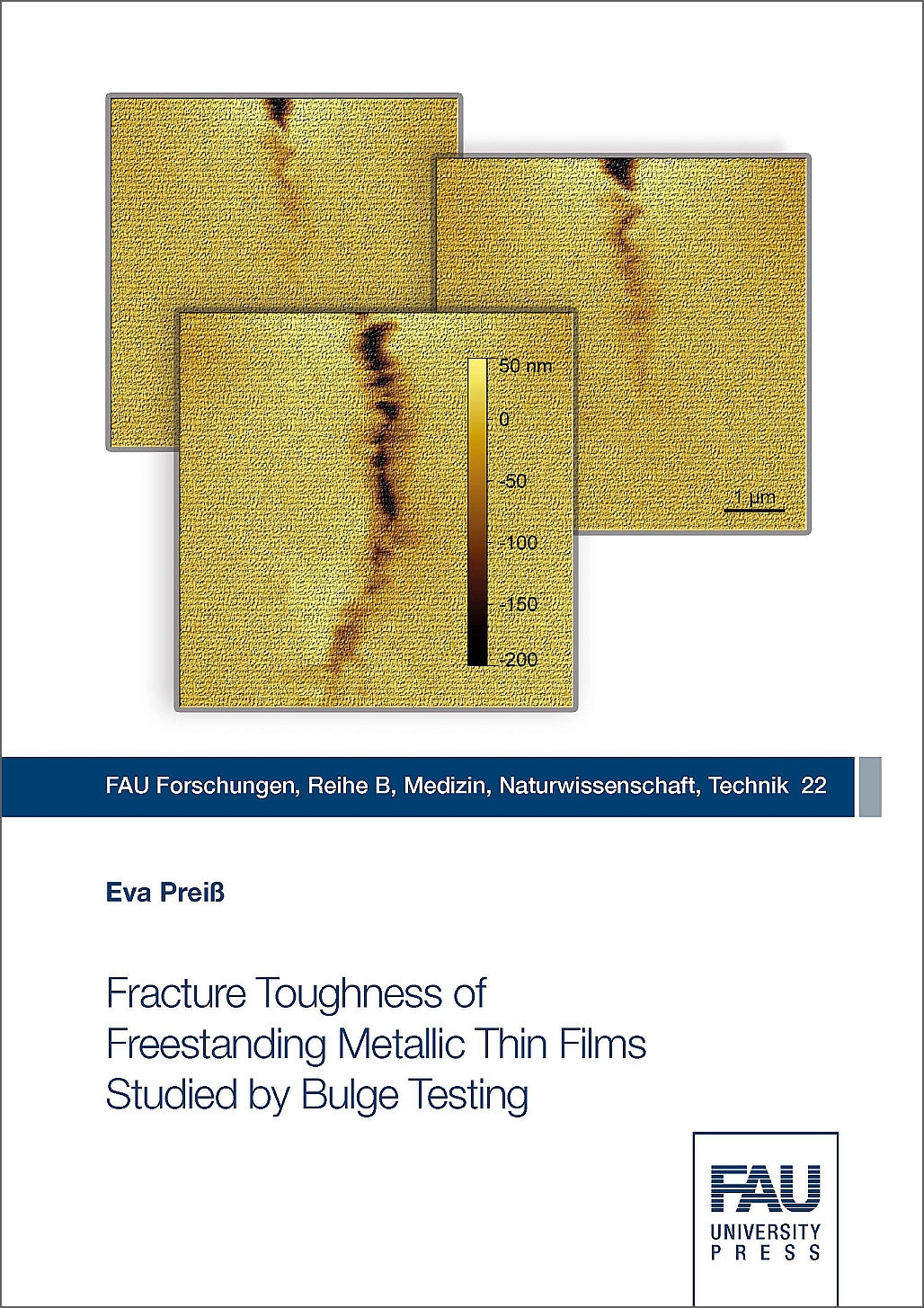Description
Metallic thin films are nowadays frequently used as key components in microelectronic and microelectromechanical systems, so that the functionalities of these systems often depend on the structural integrity of the incorporated thin films. As a result, the fracture toughness of thin films becomes a very important design parameter as it quantifies their resistance to crack propagation. This thesis explores why the fracture toughness of freestanding metallic thin films is surprisingly low in comparison to bulk metals and by which parameters it is affected. The fracture toughness of physical-vapor-deposited (PVD) freestanding metallic thin films was determined by bulge testing of previously notched membranes. The investigated films comprise polycrystalline gold films of 50 nm to 350 nm thickness, single-crystalline and polycrystalline silver films, and solid-solution hardened Au-Ag films. Thus, the obtained data allow for a comprehensive comparison of the fracture toughness of films with various micro-structures and properties. Complementary insights into the fracture mechanisms are gained by in-situ observations of deformation and crack propagation in an atomic force microscope.
An intrinsic thickness effect is found to be the reason for the generally low fracture toughness of metallic thin films. It is shown that the low fracture toughness is associated with an extremely small fracture process zone that can be traced back to out-of-plane components of plastic deformation that are by nature unconstrained in thin samples. For films with similar microstructure, a clear trend of increasing fracture toughness with increasing yield stress is revealed. This relationship is at first sight counterintuitive but can be accounted for by an increased resistance to local thinning in front of the crack tip which plays a decisive role in thin-film fracture. Based on these findings, suggestions are finally presented on how to improve the fracture toughness of metallic thin films.


Reviews
There are no reviews yet.